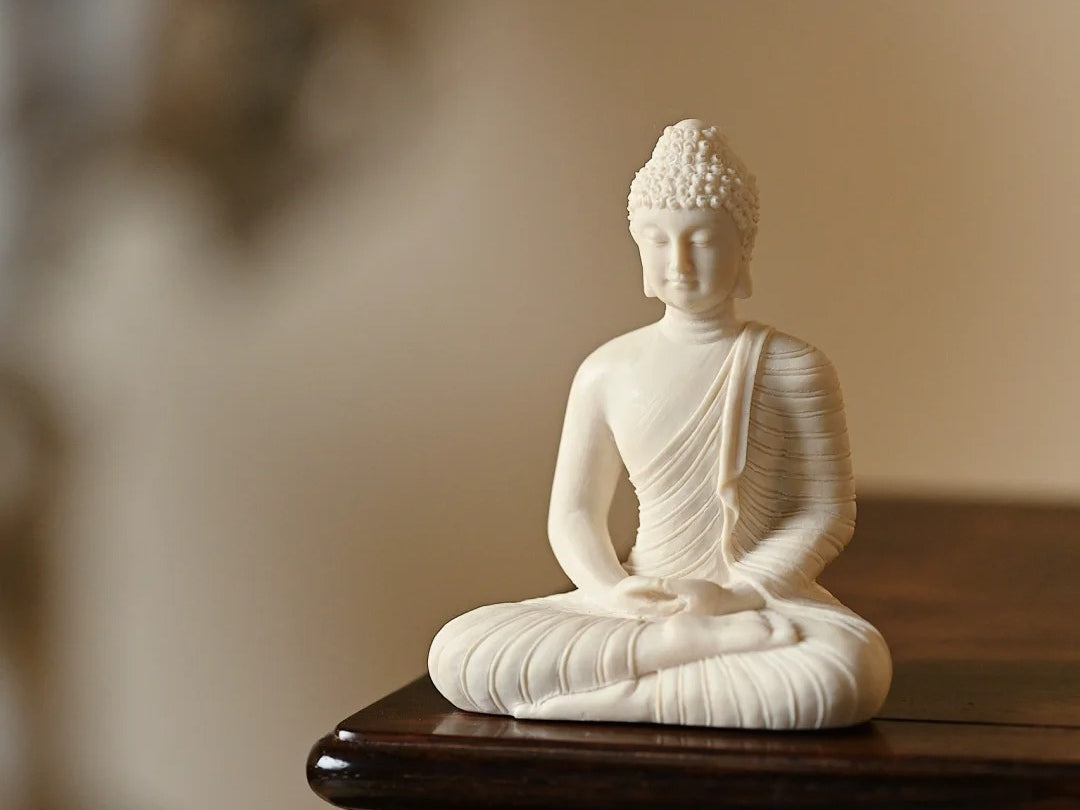In the rich tapestry of Buddhist tradition, the concept of the Three Jewels stands as a cornerstone of faith and practice. These jewels, also known as the Three Refuges, form the foundation upon which Buddhists build their spiritual lives. They are the Buddha, the Dharma, and the Sangha. Let's explore the significance of each of these jewels and how they guide the path of Buddhist practitioners.
The Buddha: The Enlightened One
The first jewel is the Buddha, not only referring to Siddhartha Gautama, the historical Buddha, but also to the potential for enlightenment that exists within every individual. The Buddha represents the ideal of complete awakening, where one is free from the cycle of birth and death, and the delusions that bind us to suffering.
The Buddha serves as an inspiration, a model for the path of enlightenment. Buddhists look to the Buddha to understand what is possible and to learn the practices that lead to liberation. The story of the Buddha's life, his struggles, and his ultimate awakening provide a narrative that encourages and instructs those on the path.

The Dharma: The Teachings
The second jewel is the Dharma, which encompasses the teachings of the Buddha, the principles of reality, and the cosmic law that governs the universe. The Dharma is the doctrine that explains the nature of existence and the path to liberation.
The Dharma is the guide for Buddhists, offering a clear set of teachings and practices that lead to understanding the true nature of reality and the cessation of suffering. It includes the Four Noble Truths and the Noble Eightfold Path, which are the foundational principles for Buddhist practice.
Many practitioners find comfort in having tangible representations of the Dharma, such as Buddhist jewelry, to keep these teachings close at heart. The intricate designs often feature sacred symbols, reminding wearers of the truths that guide their journey toward enlightenment.

The Sangha: The Community
The third jewel is the Sangha, which refers to the community of practitioners, both monastic and lay, who follow the teachings of the Buddha and support each other on the path to enlightenment.
The Sangha is essential for providing a supportive environment where Buddhists can learn, practice, and grow together. It serves as a reminder that the spiritual path is not one of isolation but of connection and mutual support. The Sangha embodies the collective wisdom and compassion of the Buddhist community.

The Significance of the Three Jewels
The Three Jewels are not separate entities but are interconnected aspects of the Buddhist path. They provide the framework within which Buddhists can cultivate wisdom, ethical conduct, and mental discipline.
The Buddha offers inspiration, the Dharma provides the map, and the Sangha offers companionship. Together, they form a complete system of spiritual support, guiding Buddhists towards the ultimate goal of Nirvana.
A Path of Transformation
Engaging with the Three Jewels is not just an intellectual exercise but a path of transformation. It involves embodying the qualities of the Buddha, living in accordance with the Dharma, and being an active part of the Sangha.
Conclusion
For those seeking a tangible connection to these teachings, symbols like the Buddha pendant and Buddhist jewelry provide not only beauty but also profound meaning, making them an integral part of spiritual expression.
The Three Jewels—Buddha, Dharma, and Sangha—are the pillars of Buddhist practice. They are not lucky charms but profound realities that offer guidance, inspiration, and community to those who seek to understand the nature of existence and to end suffering. By taking refuge in the Three Jewels, Buddhists embark on a journey of profound self-discovery and spiritual growth, moving towards a state of peace and liberation. May the light of the Three Jewels illuminate your path to wisdom and compassion.



